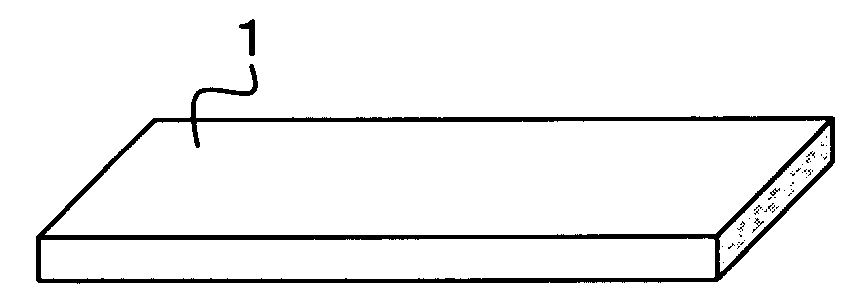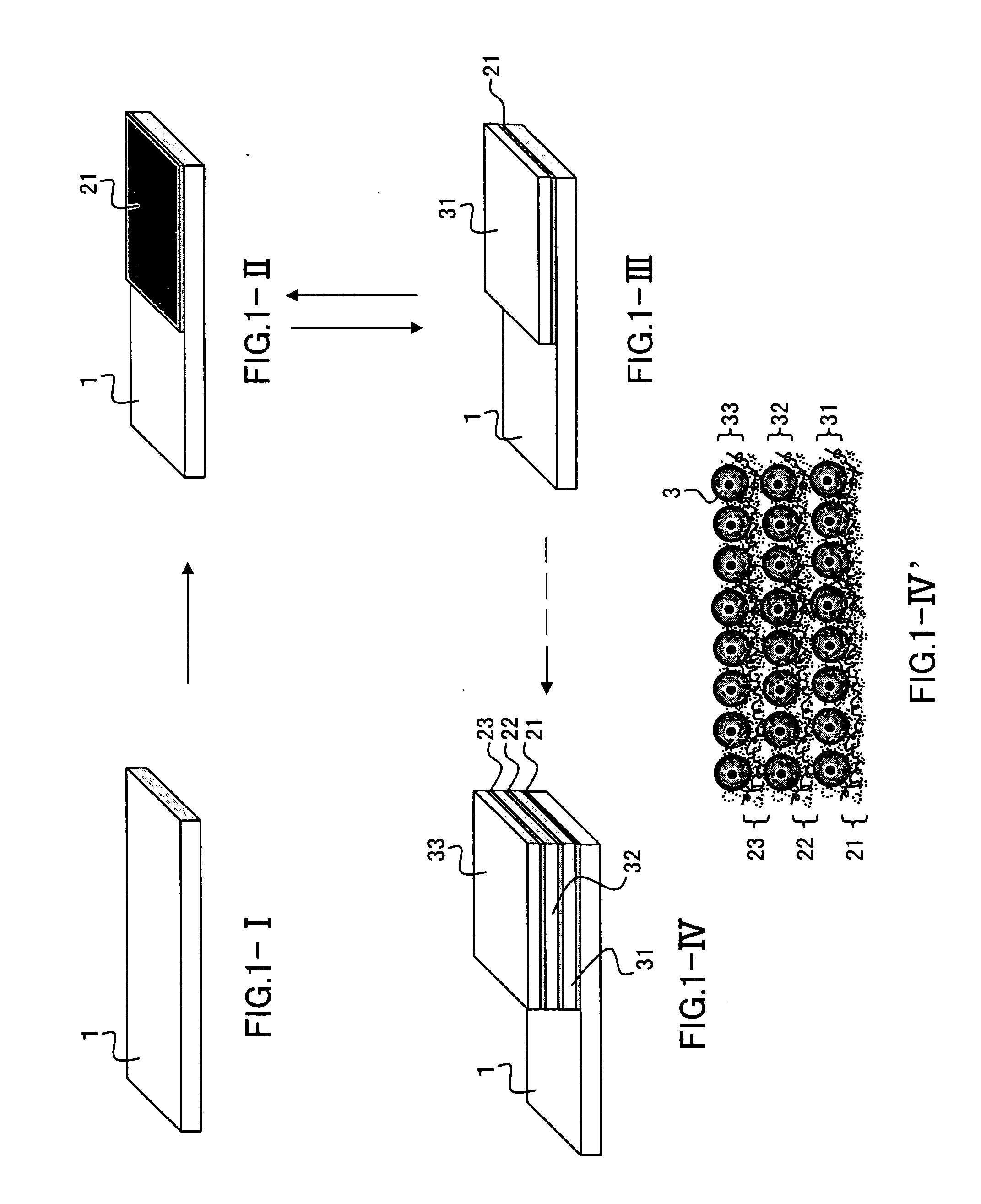Method of producing three-dimensional tissue and method of producing extracellular matrix used in the same
a three-dimensional tissue and extracellular matrix technology, applied in general culture methods, non-embryonic pluripotent stem cells, biochemistry apparatus and processes, etc., can solve the problems of difficult to realize three-dimensional tissue construction with cells merely by cell culture, difficult to construct the tissues of such organs by cell culture, and the layer itself has a very low mechanical strength, etc., to achieve excellent reproducibility and efficiency, simple
- Summary
- Abstract
- Description
- Claims
- Application Information
AI Technical Summary
Benefits of technology
Problems solved by technology
Method used
Image
Examples
example 1
[0069]A nanoscale-thick nano-ECM in which fibronectin and gelatin were laminated alternately was produced. The substrate used for the nano-ECM formation was a quartz crystal microbalance (QCM) substrate, and the thickness of the matrix being formed was determined by measuring a frequency shift.
[0070]First, the QCM substrate was washed with a piranha solution for 1 minute and then dipped in a 0.5 M Tris buffer containing 0.2 mg / ml (0.02 wt %) fibronectin (pH 7.4, hereinafter the same) at 37° C. for 15 minutes. Subsequently, the substrate was washed with a 1 mM Tris buffer (pH 7.4) and then air-dried, after which the frequency shift was measured. Next, the substrate was dipped in a 0.05M Tris buffer containing 1 mg / ml (0.1 wt %) gelatin (pH 7.4, hereinafter the same) at 37° C. for 15 minutes. Again, the substrate was washed with a 1.0 mM Tris buffer (pH 7.4) and then air-dried, after which the frequency shift was measured. By repeating these steps alternately, nano-ECMs (n=3) were for...
example 2
[0072]Nano-ECMs each composed of gelatin and fibronectin were produced to construct a three-dimensional tissue with mouse fibroblasts (L929).
[0073]A first nano-ECM was formed on a slide glass (1.5 cm in width×2 cm in length) in the following manner.
[0074]The first nano-ECM was formed by dipping the slide glass in the fibronectin-containing buffer and the gelatin-containing buffer. Note here that the seven dipping steps were performed in total with the buffer in which the slide glass was dipped first being the fibronectin-containing buffer. After the slide glass had been dipped in the respective buffers, the slide glass was washed by being dipped in a 50 mM Tris buffer (pH 7.4) for 1 minute. As a result, about 10 nm thick nano-ECM whose lowermost layer and uppermost layer were both fibronectin layers was formed on the slide glass. Note here that dipping of the slide glass in either of the buffers at 37° C. for 15 minutes was regarded as one dipping step. Also note that only an end po...
example 3
[0081]Nano-ECMs each composed of fibronectin and gelatin were produced to laminate mouse fibroblasts (L929) three-dimensionally. The resultant three-dimensional tissue was evaluated using a confocal laser microscope.
[0082]Nano-ECMs and cell layers were laminated on a slide glass in the same manner as in Example 2, thus forming a three-dimensional tissue having a layered structure composed of first nano-ECM / first cell layer / second nano-ECM / second cell layer. The thickness of the first nano-ECM was about 13 nm and the thickness of the second nano-ECM was about 13 nm as in Example 2.
[0083]The three-dimensional structure of the thus-obtained three-dimensional tissue was observed with a confocal laser microscope. The results are shown in FIGS. 5 and 6. In FIG. 5, the micrograph (A) shows the X-Y plane of the three-dimensional tissue, the micrograph (B) shows the X-Z plane of the three-dimensional tissue, and the micrograph (C) shows the Y-Z plane of the three-dimensional tissue. The micr...
PUM
 Login to View More
Login to View More Abstract
Description
Claims
Application Information
 Login to View More
Login to View More - R&D
- Intellectual Property
- Life Sciences
- Materials
- Tech Scout
- Unparalleled Data Quality
- Higher Quality Content
- 60% Fewer Hallucinations
Browse by: Latest US Patents, China's latest patents, Technical Efficacy Thesaurus, Application Domain, Technology Topic, Popular Technical Reports.
© 2025 PatSnap. All rights reserved.Legal|Privacy policy|Modern Slavery Act Transparency Statement|Sitemap|About US| Contact US: help@patsnap.com



